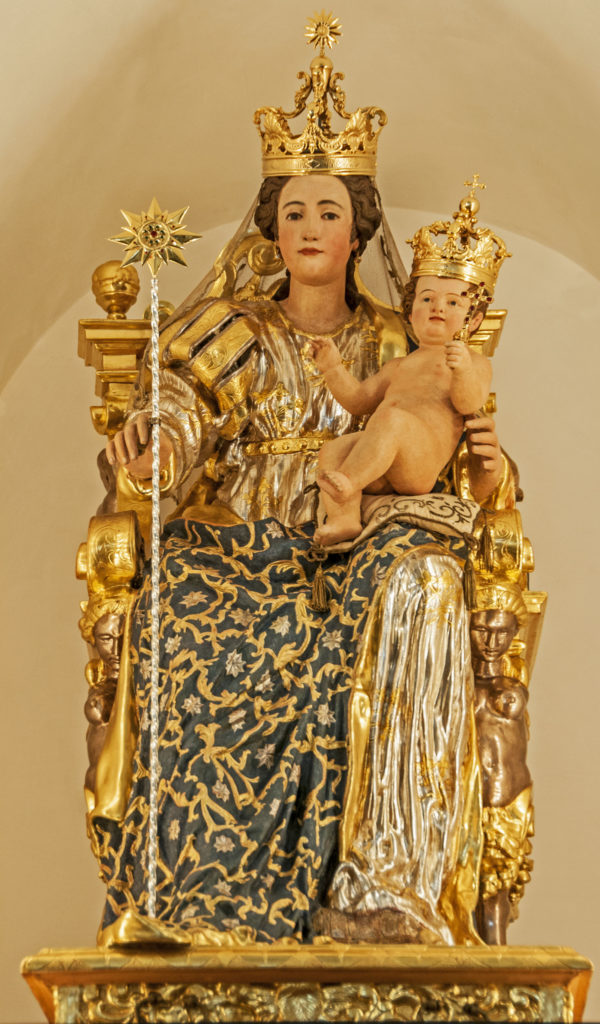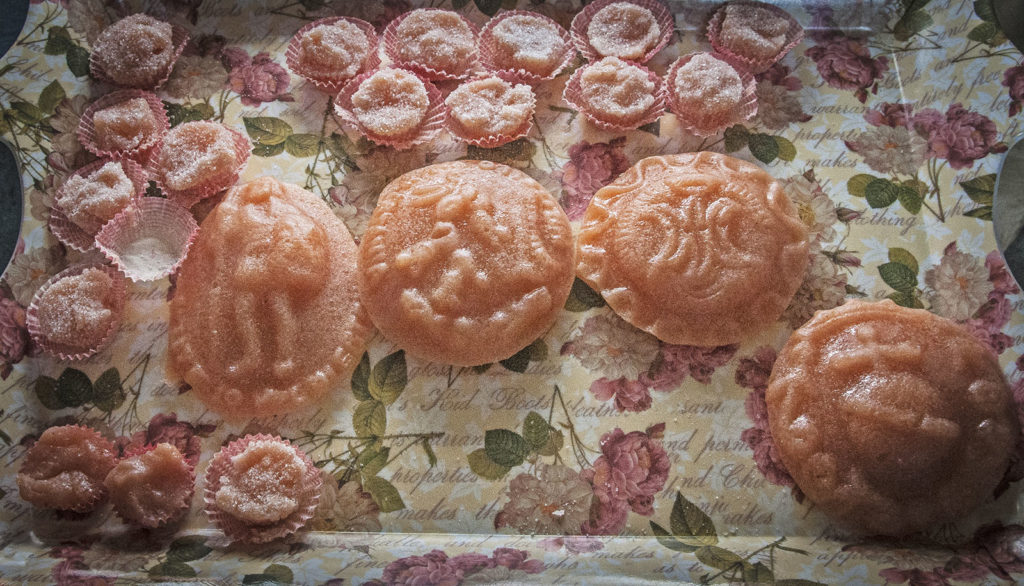
On the eve of the Feast of the Madonna in Militello, which is celebrated on 8th September, one of the most exciting moments of the celebration takes place.
Before the statue is unveiled, and before the ritual celebrations, the crowd waits in muffled silence.
The statue is kept in a niche hidden by an iron sliding door that slowly opens to reveal the statue of the Madonna della Stella in all its shining beauty.
In the church of Madonna della Stella there is a collection of ancient liturgical vestments, clothes worn by the priest during celebration of the services.
Some of the precious fabrics of the vestments were donated by rich lords who traded fabrics, some of which came from Egypt.
The fabrics, now disused, were remodelled by the cloistered nuns, who supported themselves with these sartorial works by making wonderful priestly clothes enriched with gold thread embroidery.
 Cotognata (quince paste) is a tasty typical sweet. It is made with quince, lemon and sugar and is cooked using the same process as jam.
Cotognata (quince paste) is a tasty typical sweet. It is made with quince, lemon and sugar and is cooked using the same process as jam.
Sometimes, on the occasion of certain festivities, these sweets are created with moulds and shapes, such as the patron saint or the coats of arms.
This culinary experience links votive tradition with flavour.
 The magnificent pipe organ that rises from the chancel above the large entrance portal was built between 1925 and 1928 by the brothers Michele and Agostino Polizzi of Modica, who sought to bring back Baroque melodies to the restored church.
The magnificent pipe organ that rises from the chancel above the large entrance portal was built between 1925 and 1928 by the brothers Michele and Agostino Polizzi of Modica, who sought to bring back Baroque melodies to the restored church.
In fact, the sound of this scenographic instrument takes inspiration from some typical Serassian sounds, i.e. a range of 19th-century organ sounds, composed by the famous dynasty of organ masters, the Serassi family.